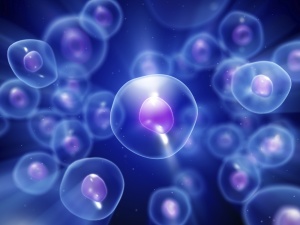
© iStockphoto.com/Henrik Jonsson
Human embryonic stem cells (hESCs) are derived from blastocysts at the earliest stages of embryonic development. They can divide indefinitely and differentiate into any cell type found in the body — a property known as pluripotency. Until now, the mechanisms underlying pluripotency have been far from clear. Now, a team of researchers led by Andre Choo and Simon Cool at the A*STAR Bioprocessing Technology Institute and Institute of Medical Biology, respectively, has elucidated the fibroblast growth factor (FGF)-2 signaling pathway that maintains human embryonic stem cells (hESCs) in their undifferentiated state.
Previous studies have shown that FGF-2 maintains cultured hESCs in their undifferentiated state by activating the FGF receptor (FGFR), which in turn activates the mitogen activated protein kinase (MAPK) and phosphoinositide 3-kinase (PI3-K) signaling pathways.
Choo, Cool and co-workers found that FGF-2 induces rapid and prolonged activation of the MAPK and PI3-K signaling pathways by key phosphorylating components. They also found that PI3-K signaling pathway plays a more critical role in pluripotency; inhibition of this pathway results in the down-regulation of genes associated with pluripotency.
Further experiments revealed that PI3-K activates a key signaling pathway known as Wnt signaling, which then inactivates an enzyme called GSK3β. This causes a protein called β-catenin to move from the cytoplasm into the nucleus, where it regulates a number of genes that are required for pluripotency.
The researchers performed the same experiments in induced pluripotent stem cells (iPSCs) and obtained similar results. iPSCs are cells derived from differentiated adult cells, which are forced back into their undifferentiated state by altering the level of pluripotency associated genes expression. Because of their ability to differentiate into any cell type in the human body, both hESCs and iPSCs hold enormous potential for the treatment of a wide variety of diseases and conditions, including heart and Parkinson’s diseases. Differentiated hESCs and iPSCs are also useful for the toxicology screening of newly developed drugs.
The new findings are significant because they enable scientists to understand the intricate signaling mechanisms controlling hESC and iPSC pluripotency. Understanding the mechanism behind pluripotency could lead to improved methods to expand stem cell populations in their undifferentiated state, and help in the design of strategies to induce stem cells to initiate differentiation into specific lineages for use in therapeutic applications.
The A*STAR-affiliated researchers contributing to this research are from the Bioprocessing Technology Institute and Institute of Medical Biology.



